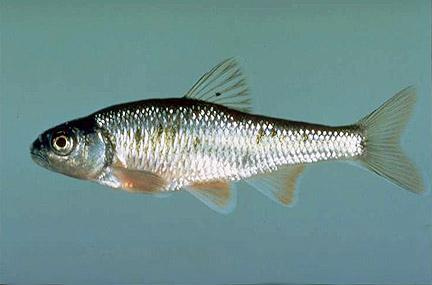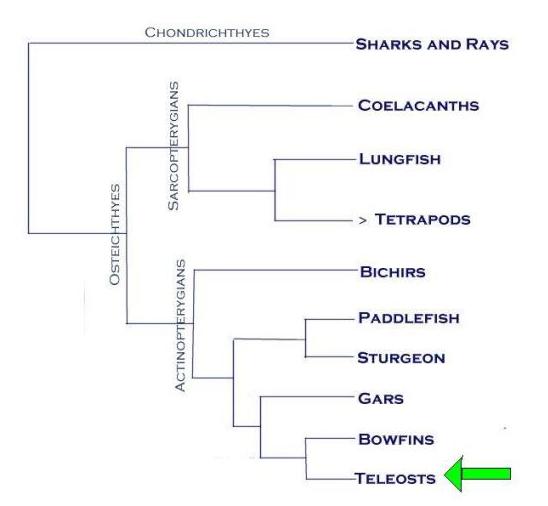Luxilus cornutus - BIO203
Luxilus cornutus : Scientific Classification
Domain - Eukarya
Kingdom - Animalia
Phylum - Chordata
Class -
Actinopterygii
Order -
Cypriniformes
Family -Cyprinidae
Genus - Luxilus
Species -
L. cornutus
Domain
All members of the eukarya are characterized by basic
features, such as membrane bound organelles and a true nucleus, which
both allow for much more complex levels of division and growth.
Kingdom
All members of the animalia are characterized by being
multicellular and heterotrophic. This means that they must rely on other
organisms as their source of nutrients.
Phylum
All members of chordata are characterized by 5 major
characteristics that are observed at some point during animal
development; a notochord, a dorsal hollow nerve chord, pharyngeal slits,
post anal tail, and an endostyle.
Class
Actinopterygii is the largest and most successful group of
fishes and even makes up half of all living vertebrates! Fish part of
this class are classified by
having no extension of radials or muscles into the fin base and have a
dorsal fin that is either single or divided.
Order
Members of the cypriniformes have only a single dorsal fin on
their back and also have no teeth in their mouth. Instead they posses
pharyngeal teeth in the throat that grind against a chewing pad on the
base of the skull.
Family
Cyprinids are stomachless fish and have a well developed
a sense of hearing due to their possession of a
Weberian apparatus.
Genus
The genus level of classification can be identified by
some morphological features such as body depth and compression, mouth
orientation, and body and fin coloration. Luxilus is
characterized by having a compressed body with their mouth being
terminal to somewhat oblique. Another characteristic is that their
dorsal fin has an anterior insertion point that is directly in line or
slightly behind their pelvic fin insertion point.
The phylogenetic tree above was determined by morphological features.
The osteichthyes and chondrichthyes are superclasses of fish that are separated by the feature that chondrichthyes are cartilaginous fish while the osteichthyes are bony fish. Actinopterygians is the actual class discussed above and is separated based on the structure of the fin. The teleosts is an infraclass; the largest and most diverse infraclass seen here. Teleosts will give rise to the order cypriniformes which is also discussed above.
The phylogenetic tree to the right is inferred from cytochrome b
sequences on Luxilus and three other taxa, with all changes
weighted equally.
This phylogenetic tree is very specific, comparing the molecular traits of the genus Luxilus. This tree shows many of the other members that are part of the same genus of the common shiner. The top portion of the tree even demonstrates some other closely related genera.
Go back home, or to find out more about where this common little fish lives, click here!

